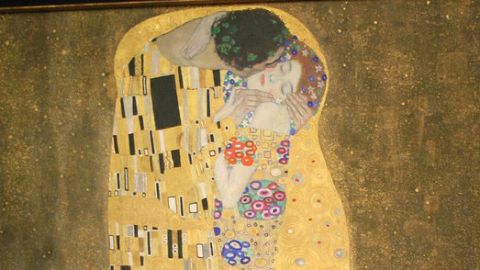The State of Affairs: A Brief History of Getting Some on the Side

The extramarital alliance has an interesting history of its own. It’s not all clichés from John Updike and Gay Talese. Here’s a snapshot of how various moments in history might have completed the sentence, “Getting some on the side is _______”
…punishable by death.
The last person to be hanged for adultery in England was hanged in 1654. The latest and probably not the last woman to die for it in Afghanistan was two weeks ago. I don’t know who she was, but she’s been on my mind. Same planet, different worlds.
… enlightened.
The 1700s was a “pro-sex” culture in comparison to the 1800s. It was a heyday for the mistress, the kept woman and the merry bawdy houses, a laFanny Hill. Enlightenment ideas were loosening the severity toward adultery. Oxford historian Faramez Dabhoiwala argues that the “first sexual revolution” happened in the 1760s, not the 1960s.
I think he’s correct. In the 1700s, “people have started to think and behave differently,” explains Dabhoiwala, “there was a huge explosion in the amount of sex outside marriage, which was no longer punished.” Instead, we embraced “a completely new way of thinking about the purpose of life, [and] the greatness of sexual pleasure.” Says Dabhoiwala, this paradigm shift was all rooted in “basic Enlightenment principles.” The authoritarian, Biblical enjoinders weakened, and sex became something to celebrate.
…a necessary evil.
In the 1800s the mistress went underground and the double standard flourished. The American middle class was defining itself morally, and growing stronger. Getting some on the side became a target for more opprobrium and concern. Sexual license wasn’t condoned for men or women. But, ideas about women’s desires were also changing. “Respectable” women were no longer considered to be sexually dangerous and insatiable, but “passionless” and lacking desire. Given the wife’s passionless respectability and the husband’s naturally lustier appetites, the affair was a necessary evil—one to be satisfied with vulnerable women of the working class, domestics, or prostitutes.
…emancipatory.
“If love does not know how to give and take without restrictions,” said free love advocate Emma Goldman, “it is not love, but a transaction that never fails to lay stress on a plus and a minus.” Radical feminists in the early 1900s thought that conventional marriage was a proprietary institution. It enforced sexual bondage, economic dependence, and women’s subordinate status. Goldman and Victoria Woodhull saw conventional marriage as a relationship of subjugation—the exchange of sex for support, albeit with just one client.
…an open secret.
The 1940s and 1950s are more square retrospectively than historically, when mistresses appeared in screwball comedies and blues songs, and a fair amount of heterosexual queerness in the demimonde was tolerated. The 1950s is an age of salutary neglect for the side dish. Marriages maintained an illusion of monogamy, and paid it lip service, but didn’t actually think that they had to be strictly and entirely monogamous. Theirs isn’t a simple case of hypocrisy. Marriage was sincerely thought to be a good, serviceable institution for organizing society, and monogamy was a more or less workable idea, even if spouses sometimes, or often, tolerated affairs.
…fashionable.
Remember the t-shirt, “if you love something, set it free?” With its clichés of swinging and wife-swapping, non-monogamy was all about “freedom,” recreational sex, the loosening of proprietary shackles on the heart, and ambitiously remaking the institution of marriage. Non-monogamy was institutionally subversive in a way that the 1950s middle class wouldn’t have condoned, even with its salutary neglect of the affair. The idea of open marriage was notably co-ed in the 1970s, but the foundation for it wasn’t. Women didn’t have parity with men economically, socially or in sexual mores, so the booty wasn’t distributed to equal effect. Some women who reflected on the “sexual revolution” and loosening monogamy standard in Shere Hite’s important study thought it was the “biggest sham” of the century.
… immoral.
The “family values” retrenchment of the 1980s is glossed as a revival of the 1950s, but its ideas about adultery were different. The family values message was about actual behavior. Not only should a spouse say and act like they’re monogamous, they actually should be monogamous. The 1950s aspired to social order, but tolerated a level of discreet non-monogamous behavior. The 1980s aspired to our souls instead.
… feminized.
In the age of “free love 2.0,” the sexual double standard is being challenged and the idea of non-monogamy remade in women’s image. For decades the emphasis in feminism was to bring male sexual behavior in line with monogamy and marital fidelity, to neuter the tomcat. But as women gain more power in the economy and culture, they’re testing the old sexual mores and power. The major advice books on non-monogamy and polyamory are written by women; wives initiate the conversation often, and they approach and shape monogamy in a more ethical, even conventionally “feminine” way: Less about scoring and lying, more about trying to have integrity. The non-monogamy ideal today, as I describe in my book, has less political chic than in the 1970s, but a more solid footing in economy (women earn their own keep), technology (it’s easier to find people), and demography (we live longer than ever, challenging marital monogamy). Today, getting some on the side is… less lava lamp, more paycheck; less macramé, more Google.





